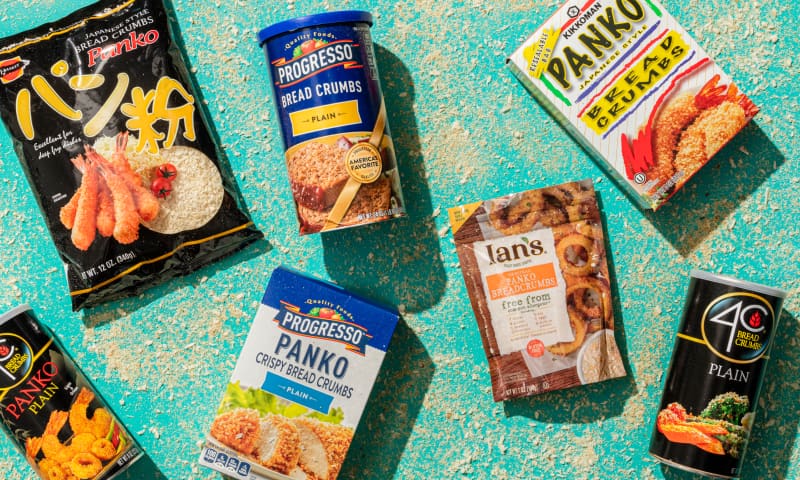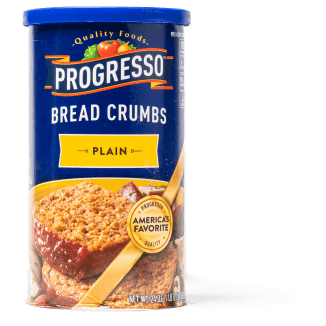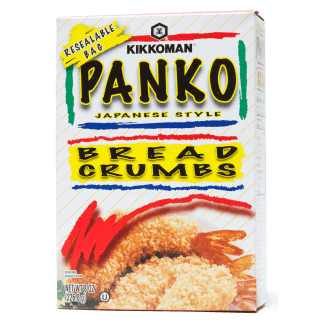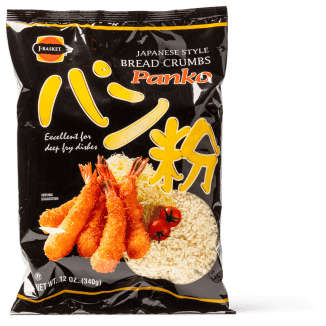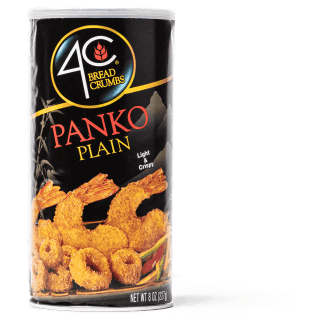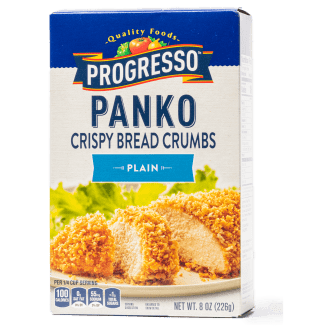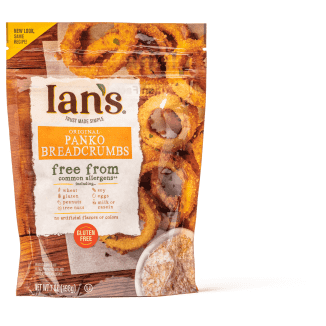Bread crumbs are an important ingredient we use in several very different ways: as a breading, such as on chicken cutlets or fish fillets; as a crunchy topping, such as on casseroles, roasted vegetables, and pasta dishes; and as a binder in meatloaf and meatballs. There are three main styles of bread crumbs. Fresh bread crumbs are made by whizzing slices of bread in a food processor. Plain dried bread crumbs are made by finely grinding loaves of bread. Panko, which hails from Japan, is made by shredding a specific type of crustless white bread. The sizes, textures, and moisture contents of these three styles vary, so we always specify which type to use in our recipes for the best results.

To explore and explain the differences between the styles, we made our own fresh bread crumbs; purchased the leading brands of plain dried bread crumbs and panko; and used them as a breading ingredient (on pan-fried chicken cutlets) and as a toasted topping (on baked macaroni and cheese). We compared the results, found our favorite products, and gathered our best tips for when and how to use each style for maximum deliciousness. Here’s what to know.
Fresh Bread Crumbs
What to Know: Fresh bread crumbs are light, tender, and coarser than the other bread crumb styles.
How They’re Made: The method is simple: Tear bread into pieces and pulse the pieces in a food processor to the desired size. Sometimes we cut off the crust first and sometimes we don’t, depending on the recipe. For coarsely ground bread crumbs, pulse about 10 times. For smaller crumbs, pulse an additional five times.

How We Use Them: Fresh bread crumbs are ideal in meatballs and meatloaves. When the crumbs are mixed with milk or another liquid, the starch in the bread crumbs absorbs the liquid and forms a paste (also known as a panade) that keeps the meat moist and tender and binds the ingredients together.
Their higher moisture content combined with their larger size also means that fresh bread crumbs made an excellent topping. On the crispness scale, they were crispier than plain dried bread crumbs but not quite as crunchy as panko. They’re ideal for sprinkling over casseroles and other baked dishes, adding nice textural contrast.

When we used fresh crumbs as a breading for fried chicken cutlets, they created a lightly crunchy breading, but because this style of bread crumb is larger and varies more in size than other styles, the breading was patchier and didn’t brown as evenly.
What to Buy: In our recipes we typically call for a hearty white sandwich bread, such as our winner, Arnold Country White Bread ($3.19 for a 24-ounce loaf), which is lightly sweet and bready.
Plain Dried Bread Crumbs
What to Know: These are the most finely ground of the three styles—good for some recipes, but not for others.
How They’re Made: Plain dried bread crumbs are made commercially by baking regular bread loaves and grinding them into crumbs. Some manufacturers treat their loaves to make them stale or to dry them out to help reach their desired consistency.
How We Use Them: Because the texture of plain dried bread crumbs is so fine and uniform, they’re ideal for breading—they’re easy to press onto cutlets and fillets in a very tight, thin, and even layer. The result is a delicate crust that you can’t get with other bread crumbs.

We don’t recommend using them as a topping because they are too finely ground to add textural contrast to a dish. On baked macaroni and cheese, they were “sandy and dry” and didn’t add crunch.
We also typically don’t use plain dried bread crumbs as a binder in meatballs or meatloaf because they don’t absorb and retain moisture as well as other types of crumbs, likely because they contain oil, which repels water.
What to Buy: The supermarket options for plain dried bread crumbs are limited; we found only two nationally available products, Progresso and 4C. Both are sold in familiar tall cardboard canisters, and the crumbs inside are nearly indistinguishable from each other. Both were very uniform in size, adhered nicely to the chicken, and tasted lightly wheaty. Whichever brand you can find will be fine.
Panko
What to Know: The name “panko” (pronounced “PAHN-ko”) derives from the Japanese words for bread (“pan”) and flour or powder (“ko”). Panko bread crumbs are coarse, flaky bread crumbs made from crustless, airy white bread.
How It’s Made: The bread used to make panko is unique in that electrical currents (rather than radiant heat) are sometimes used to bake it. The raw dough is placed on metal plates that zap it, baking it evenly all the way through. During this process, no crust develops, so the flavor is fairly neutral, sometimes lightly sweet. The baked bread is dried before being run through a machine that shreds it to the desired fineness, and then it’s quickly toasted, cooled, and packaged.

How We Use It: In the test kitchen we mainly use panko for breadings and toppings, though we use it for binding occasionally. Individual pieces of panko are irregularly shaped and are often larger, flakier, and drier than other styles of bread crumbs. This means they provide the most crunch of the three styles. Unlike the lack of choice when considering plain dried bread crumbs, many brands of panko exist, and the product varies from brand to brand. We liked all the options we tried, but we had a crumb-size preference. The largest, airiest panko pieces seemed to absorb more oil during frying, creating some soggy, greasy bites. Smaller, crunchier panko pieces were hard and almost too crunchy. Products with medium-size panko crumbs created perfectly crispy chicken cutlets and a beautifully crispy topping for the macaroni and cheese.

What to Buy: The medium-size pieces of our favorite panko, Kikkoman Panko Bread Crumbs ($2.59 for 8 ounces), made it especially successful in a range of recipes. On fried chicken cutlets, it made a crisp breading that didn’t absorb too much oil, and it added the perfect amount of delicate crunch as a topping for the macaroni and cheese.
Type of Bread Crumb | Type of Bread Crumb 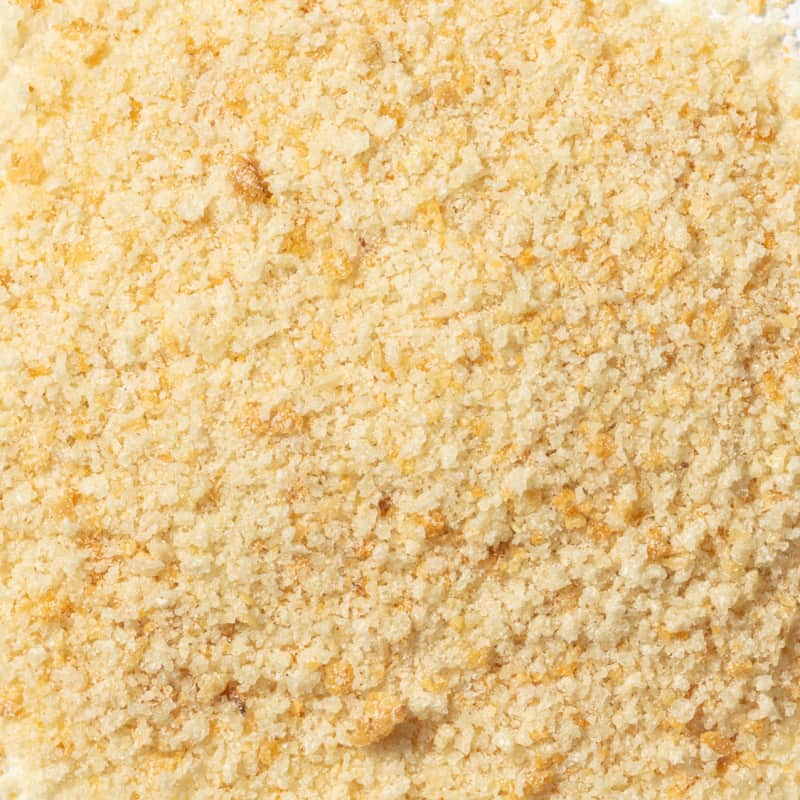 Plain Dried Plain Dried | Type of Bread Crumb 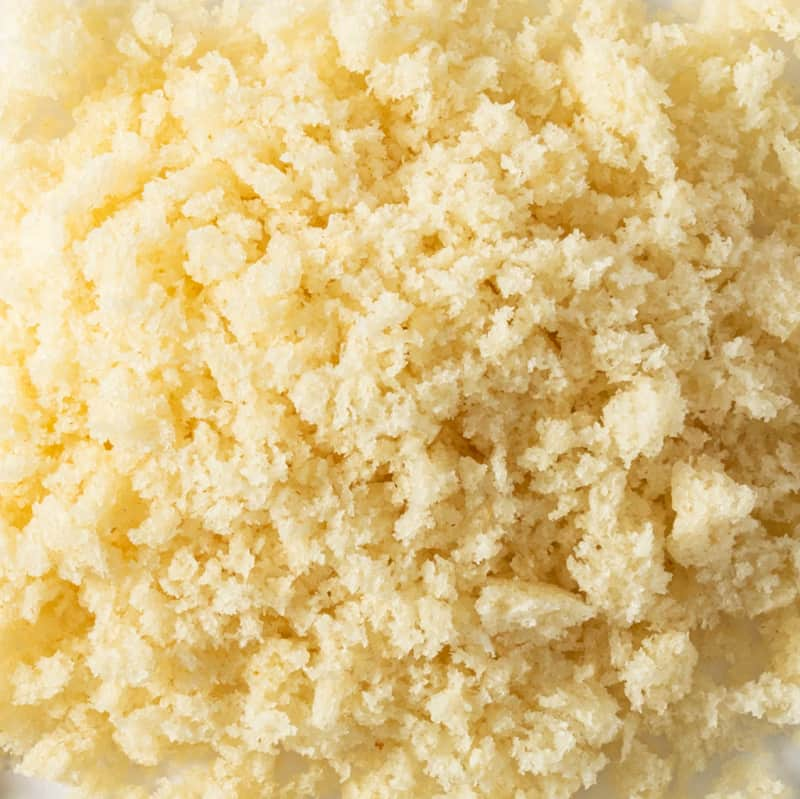 Fresh Fresh | Type of Bread Crumb 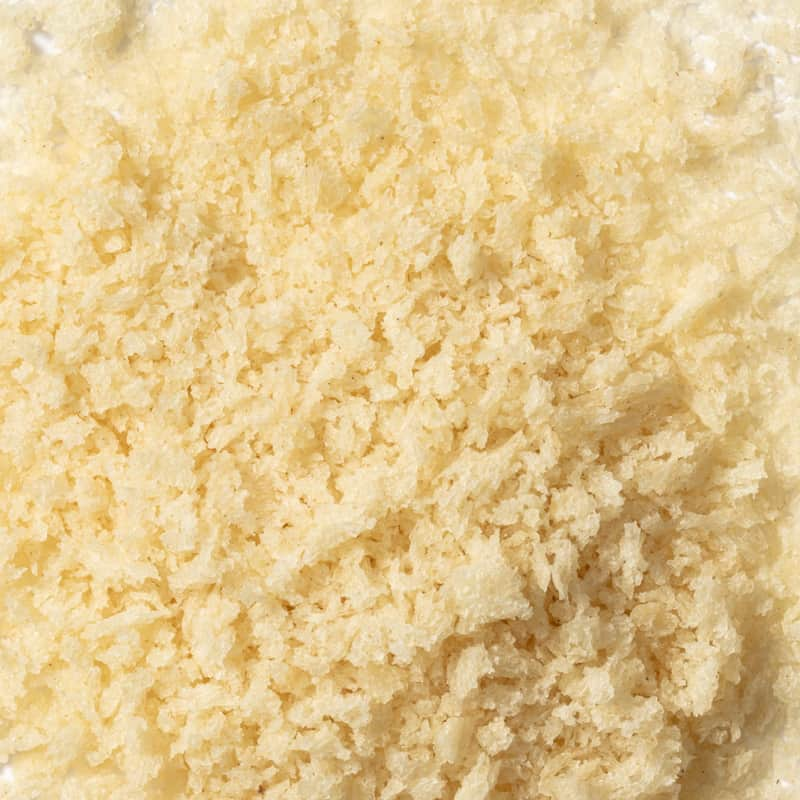 Panko Panko |
|---|---|---|---|
Primary Use(s) | Primary Use(s) Breading | Primary Use(s) Breading, topping, binding | Primary Use(s) Breading, topping, binding |
Tasting Notes | Tasting Notes Wheaty, nutty | Tasting Notes Bready, fresh | Tasting Notes Neutral, slightly sweet |
Some of Our Favorite Recipes | Some of Our Favorite Recipes Chicken Schnitzel (breading) | Some of Our Favorite Recipes | Some of Our Favorite Recipes |
Tips
- In recipes when we want to create a slightly more compact, though still crunchy, crust, we sometimes alter the size of the panko. Simply place the panko inside a zipper-lock bag and gently crush it with a rolling pin.

- Whether you’re sprinkling bread crumbs over a casserole that you’re about to bake or over another dish you’re just about to serve, we find it’s best to toast them. You can use either fresh bread crumbs or panko, but we suggest skipping plain dried bread crumbs as a topping because the results will be too sandy. To toast fresh bread crumbs and panko, heat butter or oil in a skillet over medium-high heat; add the bread crumbs or panko; and cook, stirring frequently, until the bread crumbs are golden brown, 2 to 5 minutes.
- Prepare Chicken Schnitzel with plain dried bread crumbs and Chicken Parmesan Subs with panko and fresh bread crumbs
- Prepare buttered and toasted bread crumbs (using all three styles) and use them as a topping for baked macaroni and cheese
- Samples were randomized and assigned three-digit codes to prevent bias
- Tender and crisp rather than hard and crunchy
- Moderately sized
